All the Empires have their footprints on Lahore, and we are going in a search where we could find those footprints and their importance in their peak times and influence on people now. The last step would be to share all of them with mutually interested people. So let’s get going.
Lahore with a rich history dating back over a thousand years, Lahore is a main cultural center of Punjab region. It has been the center point of empires. Lahore is one of the most populated cities of Punjab, as it remains an economic, political, transportation, entertainment, and educational hub. It has been the capital of Punjab in all-previous empires. It has been regional capital in the Mughal Empire; it served as capital city of Sikh Empire and as capital of Punjab in British Raj.

It was a cold morning of December 2014 when we left for first day to visit Dai Anga’s Mosque (Masjid) and her tomb. These both buildings are located near Beghumpura, which is 5km away from the railway station. Beghumpura once was the home of the grand nobility of Lahore; today is a far different from the grand palaces and mosques that once cherished its landscape.
We headed straight to Dai-Anga Masjid, which is near historical railway station Lahore.
Zeb-un-Nisa also known as Dai Anga was a vet nurse of Shahab-ud-din Muhammad Khurram latter who became to be known as Emperor Shah Jahan [8 November 1627 – 2 August 1658]. She was well respected among the royal family. Her son Muhammad Rashid Khan was a best archer of that time. Rashid was killed in an action with Dara Shikoh (elder son of Shah Jahan).
The first sight of the Masjid it looked a piece of art of Mugal Empire. Calligraphy and fresco gains ones attention abruptly. It was amazing to see how huge it is, exquisitely decorated in flowery paintwork. Now the paint on the walls is fading as it has borne all those harsh weather for nearly 380 years. This is the second oldest Mughal-era mosque in Lahore. The Mariam Zamani Mosque, inside the Walled City (which no longer has any walls left), is the oldest. The exterior of the Masjid is decorated with fine tile work similar to that seen at the Wazir Khan Masjid. The inscription in the mosque is said to date it to 1649 AD (1060 AH).

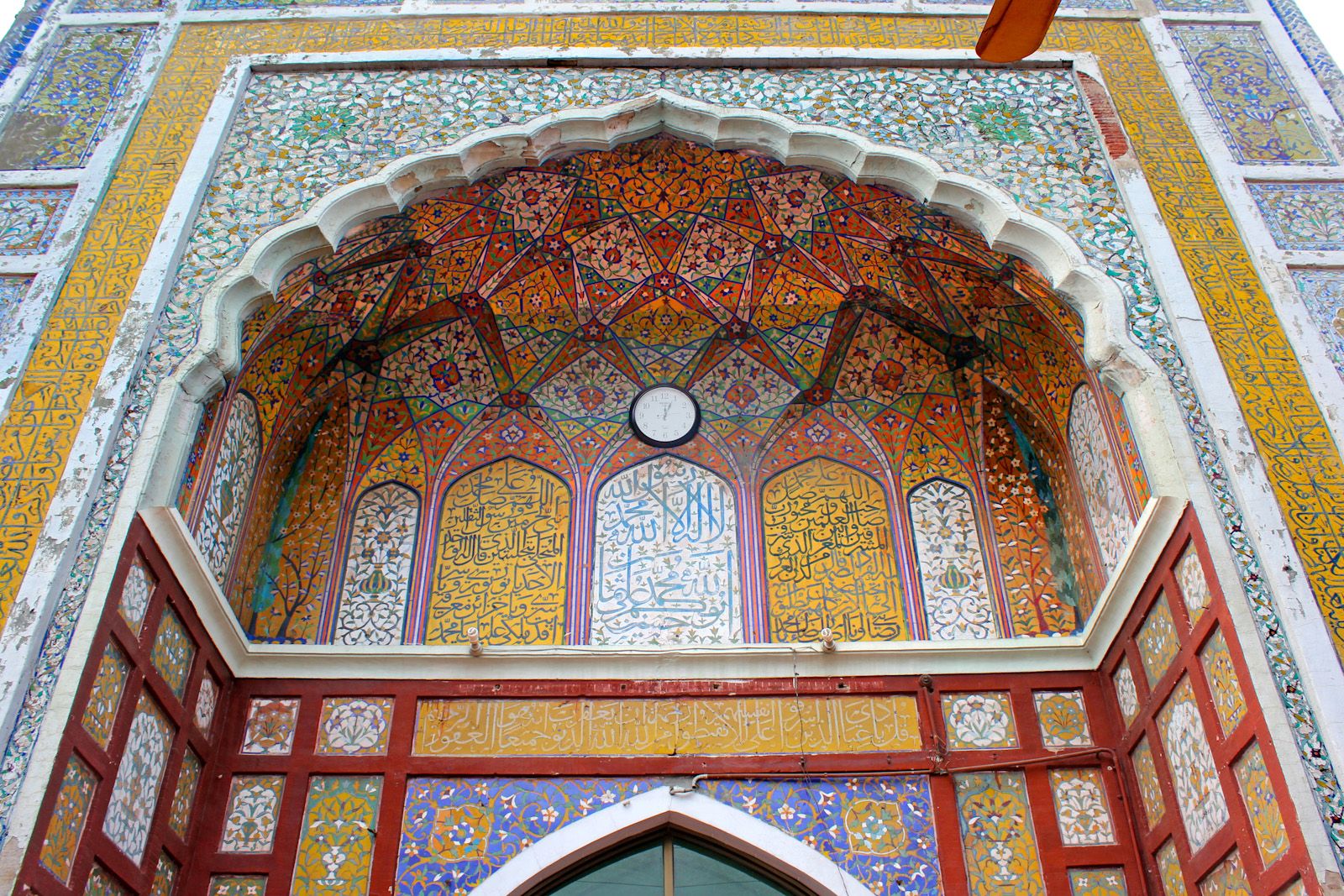
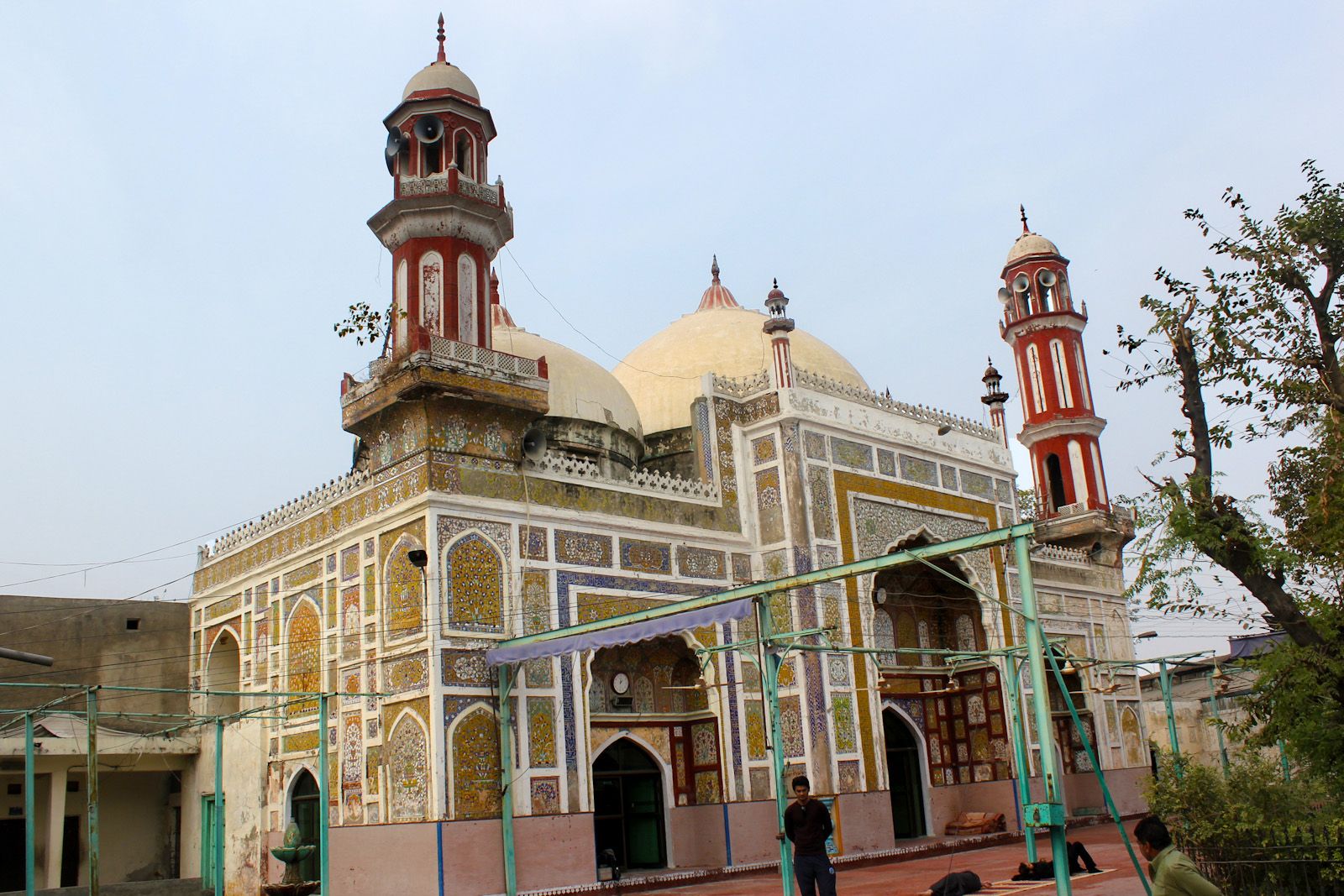


Watching the quality of the work, and we understood these modern tiles and cement were no parallel to the true conversion. We wished the reformation were made with similar limestone material. There were no money, no intention, no patience like what we were thinking. The interior also displayed fine frescoes previously; unfortunately cheap modern ceramic tiles have largely replaced these over the last 3 years breaking a 360-year-old tradition.





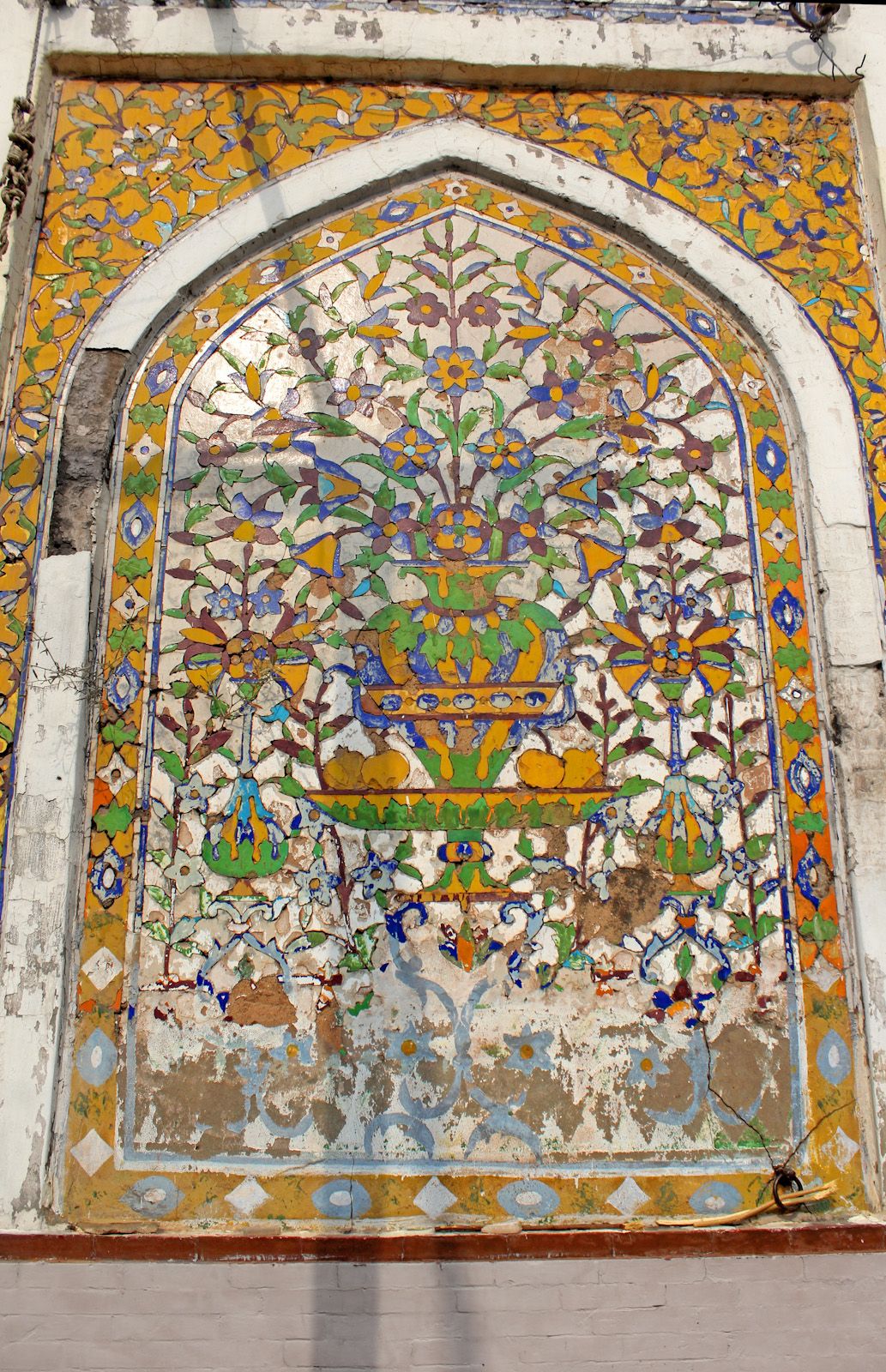

This Masjid is located near the railway station about a quarter a mile from the railway station. We spent some time in the Masjid, and relaxed and latter we left for Dai-Anga’s tomb, which was located nearby in Beghumpura. Once diverted from track, we found ourselves at a tomb of the saint, “Hazraat Eishan”
Khwaja Mehmud (also known as Hazrat Eishan) was a Sufi religious leader from Bukhara who moved to Lahore during the reign of Shah Jahan. He was a in the same era with Hazrat Mian Mir and was also noted as a great scholar and physician. He died in November 1642.
He came to Kashmir in Emperor Akbar’s reign and Jehangir, his successor, took him to Agra. During the rule of Shah Jahan, he shifted to Lahore. His mausoleum was established in his life. It is believed that the wife of Jahangir (Nur Jahan) was cured with the prayer of Hazrat Eshan. According to the information, the Sufi saint laid out a beautiful garden, but today, his tomb has a mosque and small graveyard nearby but no garden. It is said that his mausoleum was established in his lifetime.

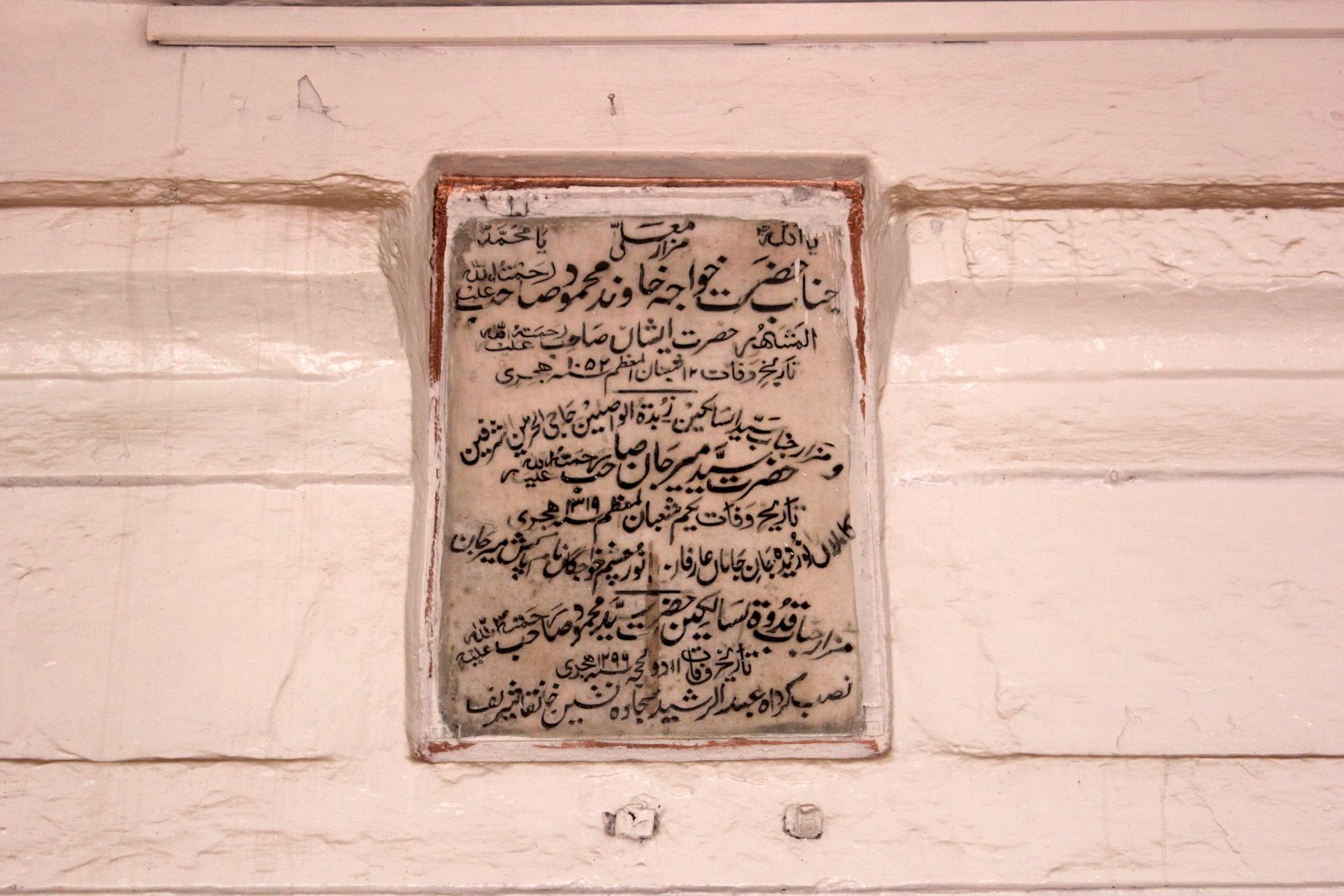


This was indeed a place well seen which was not among our list for the day. We left the tomb nearly 2pm and reached Dai Anga’s tomb.
The unusual monument of cypress tomb is also located in the Beghumpura. We ended up unintentionally here and found this magnificent and unique piece of jewel of Mughal architecture. The tomb is sacred to the memory of a pious lady Sharf-un-Nisa; who was sister of Nawab Zakriya Khan who was governor of Lahore in the period of Emperor Muhammad Shah.
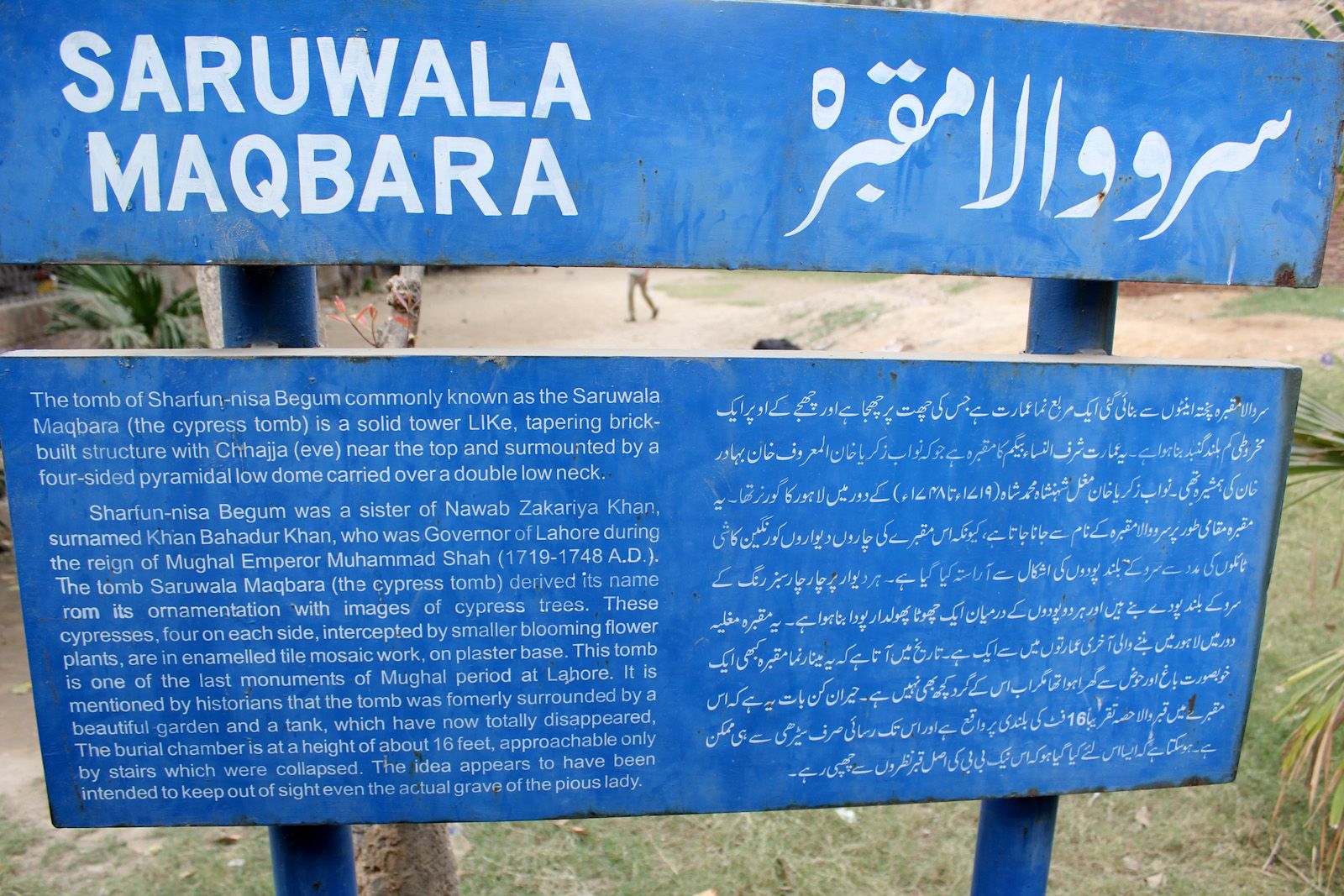
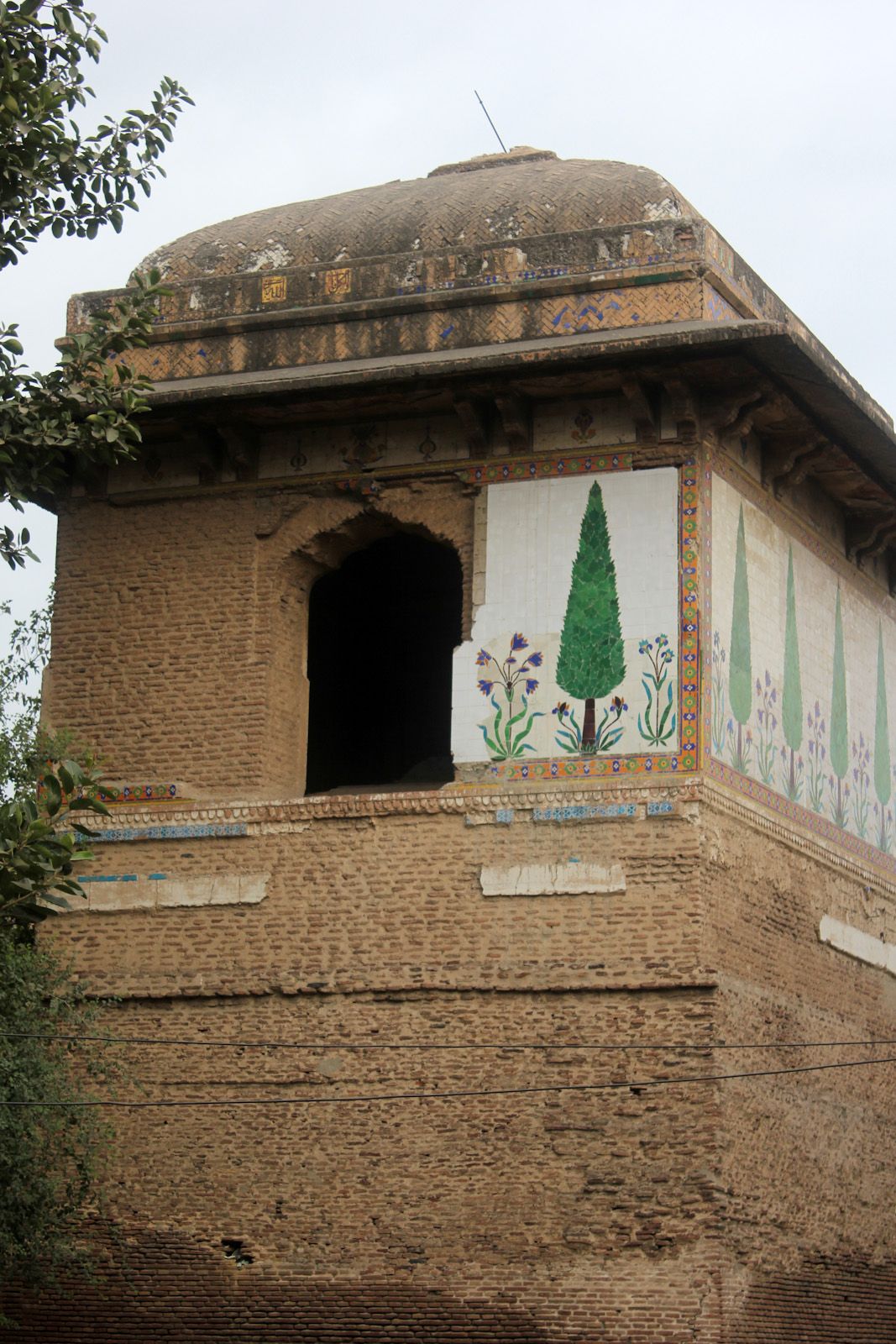
The tower like tomb, brick-built structure with Chhajja (shelf) near the top, and that is then crowned with a small dome. The front wall is decorated with cypress, which enhances its consideration. Its matchless design is unique, as there is none other of its kind throughout the sub-continent. Two indifferent stories are associated with Cypress tomb one told by the locals while the other found in books.
The tower like tomb, brick-built structure with Chhajja (shelf) near the top, and that is then crowned with a small dome. The front wall is decorated with cypress, which enhances its consideration. Its matchless design is unique, as there is none other of its kind throughout the sub-continent. Two indifferent stories are associated with Cypress tomb one told by the locals while the other found in books.


The other unusual tale found in the books was, this place was build for Sharf-un-Nisa for her meditaion “Chilla” and devotion. She used to visit this place every day to read the holy Quran every day on the top story. She would leave a jeweled sword behind alongside the Quran when she climbed down. Upon her deathbed she expressed the wish to be buried in her Cypress Tower, with the Quran and the sword placed atop her grave. Her wish accepted and the entrance of the tower was blocked with bricks to protect it. After the destruction of Begumpura, Sikh vandal who had heard of the legendary sword broke into the tower and stole the sword along with the Quran, thus destroying the sanctity of Sharf-un-Nisa away. The tomb was named after the tile decoration on its upper story.

We reached the tomb of Dai Anga, next to the University of Engineering and Technology inside the Gulabi baagh (garden). A Persian noble Mirza Sultan baig built Gulabi Bagh in 1655. He was the most senior commander of a navy under the Mughal Emperor Shah Jahan.
We reached the tomb of Dai Anga, next to the University of Engineering and Technology inside the Gulabi baagh (garden). A Persian noble Mirza Sultan baig built Gulabi Bagh in 1655. He was the most senior commander of a navy under the Mughal Emperor Shah Jahan.






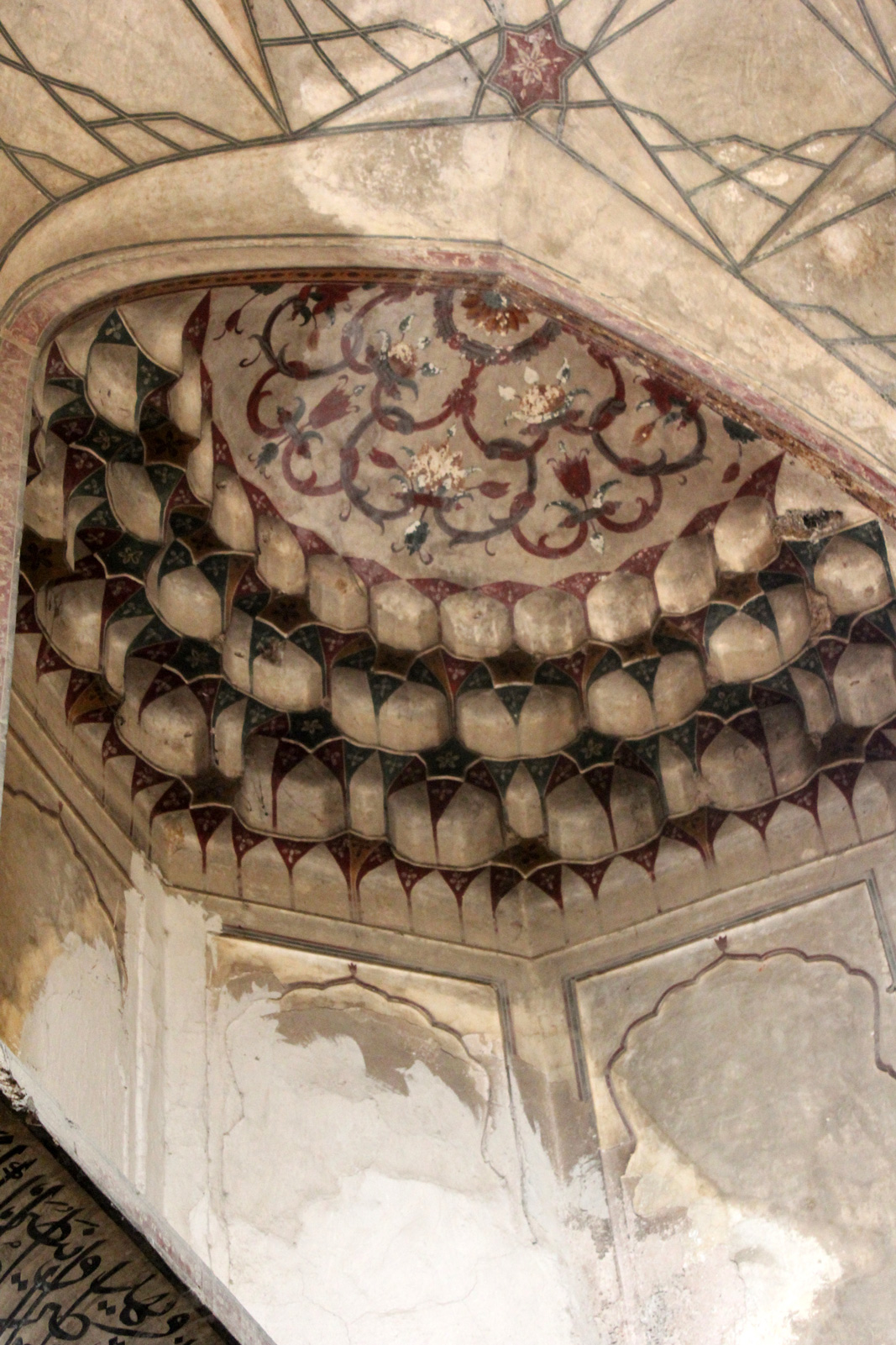
We reached the tomb of Dai Anga, next to the University of Engineering and Technology inside the Gulabi baagh (garden). A Persian noble Mirza Sultan baig built Gulabi Bagh in 1655. He was the most senior commander of a navy under the Mughal Emperor Shah Jahan.
This is dummy test. Add some more







Images & content by authors
© DestinationPak 2024 Privacy Policy | Terms of Service